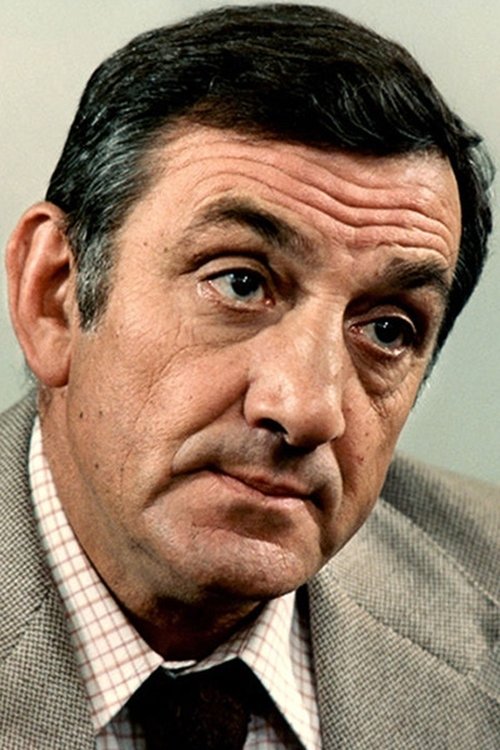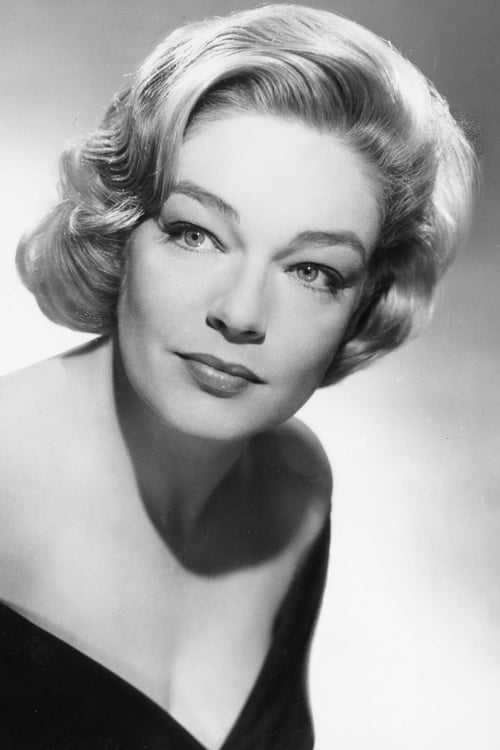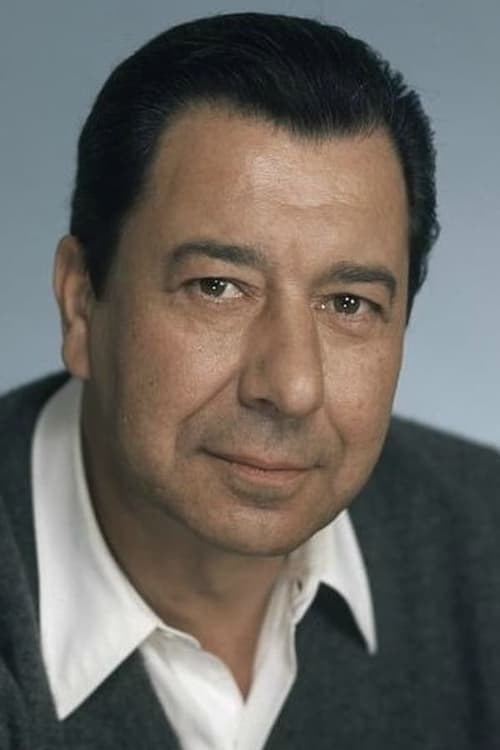
Army of Shadows
Betrayed by an informant, Philippe Gerbier finds himself trapped in a torturous Nazi prison camp. Though Gerbier escapes to rejoin the Resistance in occupied Marseilles, France, and exacts his revenge on the informant, he must continue a quiet, seemingly endless battle against the Nazis in an atmosphere of tension, paranoia and distrust.
Dialogues from Movie Army of Shadows
Quotes from Movie Army of Shadows
Memorable Scenes from Movie Army of Shadows
The Arrest of Philippe Gerbier
Philippe Gerbier, a leader of the French Resistance, is captured by the Gestapo. The build-up shows him living a life of secrecy and tension. He is betrayed by someone he trusted, leading to his arrest. The pivotal moment occurs when he’s surrounded, and his collected demeanor crumbles for just a second. The Gestapo’s cold efficiency contrasts sharply with his desperate attempts to maintain control. Afterward, we see Philippe in prison, feeling helpless but determined to resist. This scene sets the tone for the challenges he will face.
Context: Philippe Gerbier's arrest marks the beginning of his suffering and the sacrifices he must make in the fight against occupation.
The Execution of the Informant
A crucial scene where the Resistance captures an informant who has betrayed them. Tension builds as they discuss his fate, showcasing differing opinions on mercy versus justice. The turning point occurs when Philippe takes charge and decides the informant must be executed, illustrating the moral dilemmas faced during war. The aftermath sees the group shaken but resolute, as they realize the brutal reality of their struggle. This action haunts them, deepening their resolve but weighing on their souls.
Context: The informant's death highlights the harsh realities of war and the ethical challenges faced by the Resistance.
Meeting with the Shadowy Leader
Philippe meets a higher-up in the Resistance. The build-up includes his doubts about their leadership and the effectiveness of their strategies. The crucial moment occurs when the leader reveals unsettling truths about the Resistance's dangerous game. Their dialogue is sharp, laden with tension. This interaction deepens Philippe's sense of purpose but also heightens his fear. After this meeting, he becomes more committed to the Resistance, embodying its sacrifices completely.
Context: The meeting emphasizes the sacrifices and risks faced by those in the Resistance, underlining the film's themes of loyalty and sacrifice.
The Betrayal of Luc
Philippe discovers that one of his closest allies, Luc, has turned traitor. The build-up is filled with camaraderie and trust between them, making Luc's betrayal a sharp twist. The pivotal moment is when Philippe confronts Luc, leading to a tense exchange—Philippe's hurt is palpable. The aftermath leaves Philippe feeling deeply betrayed, which affects his decision-making. Luc's betrayal serves as a painful lesson about trust in wartime.
Context: Luc's betrayal emphasizes the vulnerability and paranoia that permeate the Resistance, showcasing the personal cost of betrayal.
The Assault on the Nazi Officers' Meeting
The Resistance plans a daring attack on a gathering of Nazi officers. The build-up is intense, with strategizing that shows their desperation and courage. The pivotal moment occurs when they execute their plan, filled with action and tension, demonstrating both unity and fear. The aftermath brings a temporary victory, yet they must face the consequences of their actions immediately. This scene captures the thrill of resistance but also the heavy toll it takes.
Context: This daring assault signifies the courage of the Resistance, highlighting their struggle against oppression.
The Torture Scene
A captured Resistance member endures brutal torture to reveal secrets. The build-up is heart-wrenching as the audience sees his immeasurable pain. The pivotal moment occurs when the camera lingers on his face, showing his resistance and resolve not to give in. The aftermath is forceful; the audience feels the weight of human endurance, and it underscores the risks of standing up against tyranny.
Context: This scene exposes the lengths to which the Nazis will go to quash resistance, illustrating the brutal reality of war.
Philippe’s Vision of Hope
In a quiet moment, Philippe envisions a France liberated from oppression. The build-up shows the heavy burden he carries, feeling trapped. The pivotal moment occurs as he reflects on what freedom means, leading to tears in his eyes. This scene contrasts with the otherwise grim reality of war, giving viewers a glimpse of hope. Afterward, Philippe's resolve grows stronger, propelling him into future actions.
Context: Philippe's moment of hope deepens the theme of longing for freedom and what it represents.
The Execution by Firing Squad
The grim tableau of a firing squad preparing to execute captured resistance members. The build-up creates a palpable tension as the characters face their demise. The pivotal moment arises when Philippe stands feet away from the squad, showing remarkable composure while others quaver. The aftermath leaves viewers shaken but aware of the heavy price paid for resistance. This harrowing event sticks with the audience, showing the gravity of their struggle.
Context: This execution serves as the harsh reality of war and the sacrifices made by those fighting for freedom.
Philippe's Farewell to His Family
As Philippe prepares to depart for a dangerous mission, he shares a tender farewell with his family. The build-up emphasizes his internal conflict—wanting to protect them versus fighting for freedom. The pivotal moment occurs during their parting hug when emotions overflow, and regret is palpable. The aftermath leaves an emotional void; viewers feel the depth of his commitment to the cause. This scene encapsulates personal loss against a backdrop of war.
Context: The farewell highlights the personal sacrifices made by those in the Resistance, underscoring the emotional weight of their fight.
The Secret Meeting in the Woods
Resistance members gather in a secluded area to discuss plans. The build-up shows the intensity of their fears of infiltration, highlighting the paranoia of betrayal. The pivotal moment occurs as they openly discuss the risks they face, leading to an emotional reveal from one character about their motivations. The aftermath strengthens their resolve and camaraderie but also deepens their anxiety about being discovered. This meeting plays a crucial role in shaping their future decisions.
Context: The secret meeting in the woods emphasizes themes of unity and the unrelenting fear present in these dangerous times.
The Narrow Escape
Philippe and a fellow Resistance member narrowly escape a Gestapo raid. The build-up is filled with suspense as they realize their cover is blown. The pivotal moment occurs during their frantic run, where every second counts as danger looms. Their escape is both thrilling and tense, showcasing their resourcefulness. The aftermath leaves them breathless, realizing they have narrowly dodged death, fueling their resolve to continue the fight.
Context: This moment highlights the constant danger faced by the Resistance, emphasizing the life-and-death stakes of their actions.
The Death of a Comrade
The Resistance suffers a heavy loss when one member is shot during a mission. The build-up shows the bond between the team, heightening the emotional impact of his death. The pivotal moment occurs when they collapse in shock, realizing the cost of their fight. The aftermath is filled with grief and anger, motivating them to avenge their fallen comrade. This moment emphasizes the close-knit relationships formed in war.
Context: The death of the comrade deepens the emotional stakes for the characters, reinforcing the theme of sacrifice.
Philippe's Inner Conflict
Philippe grapples with his conscience after a difficult decision weighing on him. The build-up captures his mental turmoil as he wrestles with the choices made in the name of the Resistance. The pivotal moment is a quiet scene of reflection, where he questions what he’s become. The aftermath shows his internal growth and reinforces his commitment. This moment is pivotal, as it delves deep into the moral complexities of war.
Context: Philippe's conflict illustrates the broader struggles faced by individuals in positions of power during wartime.
The Last Stand
The Resistance members make a desperate last stand against the Nazis. The build-up is electric; they know this could be their final moment. The pivotal scene is filled with tension and action, showcasing their bravery despite overwhelming odds. The aftermath is devastating, leaving the audience in shock. This climactic moment embodies the themes of courage and sacrifice prevalent throughout the film.
Context: The last stand encapsulates the fight for freedom, illustrating the ultimate sacrifice made by the characters for their cause.
The Lamentation
Philippe visits a memorial for fallen Resistance members, reflecting on their sacrifices. The build-up is solemn, filled with sadness and remembrance. The pivotal moment occurs when he kneels, struggling to hold back tears. This act of remembrance resonates deeply, offering a moment of reflection for both Philippe and the audience. The aftermath is a profound sense of loss that shapes his further actions in the film.
Context: This scene underscores the price of freedom, serving as a poignant reminder of what was lost in the fight.
The Resistance's Hidden Trust
Philippe shares intimate conversations with his fellow members about trust and loyalty. The build-up showcases a fragile sense of security within the group. The pivotal moment occurs when they each confess their fears, leading to tears and mutual support. Afterward, the bond between them is fortified, solidifying their unity. This scene brings a human touch, emphasizing the importance of connection in the darkest times.
Context: This heartfelt exchange highlights the importance of trust and camaraderie in the fight against oppression.
The Final Message
As Philippe prepares for a dangerous mission, he records a message for future generations. The build-up sees him reflecting on the reasons for his fight. The pivotal moment comes when he passionately describes his vision for a free France, filled with determination. The aftermath resonates; viewers are left with his hopes and dreams, understanding the sacrifices made by those fighting for freedom. His message becomes a powerful symbol of hope.
Context: This scene resonates with themes of legacy, sacrifice, and the enduring spirit of resistance against tyranny.
The Reveal of the Betrayer
In a shocking twist, Philippe uncovers who has been leaking information to the Nazis. The build-up is rife with tension, and the suspense is palpable as the truth unfolds. The pivotal moment is filled with anger and disbelief as Philippe confronts the betrayer. The aftermath shapes the narrative, leading to a reckoning within the group. This revelation adds further complexity to the themes of loyalty and betrayal.
Context: The reveal underscores the fragility of trust within the Resistance and serves as a chilling reminder of the stakes involved.
The Evacuation Plan
The Resistance concocts a plan to evacuate allies at risk of capture. The build-up is filled with anxiety and urgency as they race against time. The pivotal moment occurs when they execute their plan, showcasing clever tactics and teamwork. The aftermath reveals both success and loss, emphasizing the cost of their actions. This scene highlights courage and the complexities of wartime choices.
Context: This evacuation plan reflects the tight bond and unwavering commitment to protect one another among the Resistance.
The Sacrifice
One member of the resistance makes the ultimate sacrifice to save others. The build-up reveals the heavy burden on this character and their sense of duty. The pivotal moment occurs in a tense standoff, where they choose to act selflessly. The aftermath is emotional, leaving the team devastated but inspired by their sacrifice. This poignant moment speaks volumes about the lengths people will go for each other.
Context: The film’s exploration of sacrifice culminates in this powerful scene, underscoring the themes of heroism and loss.
The Dawn of Hope
As the war begins to turn, Philippe and his comrades witness a sign of change. The build-up is filled with anticipation as they monitor global events. The pivotal moment is when they hear news of victories in distant battles, triggering a shift in morale. The aftermath stirs a sense of hope, brightening their spirits. This moment reinforces the themes of perseverance and belief in eventual triumph.
Context: This glimpse of hope stands as a testament to resilience and the belief in a brighter future after hardship.
Download App
Behind the Scenes from Movie Army of Shadows
Casting Decisions Driven by Authenticity
Director Jean-Pierre Melville insisted on casting non-professional actors for several roles to add realism to the resistance members' portrayal.
Why it matters: This choice emphasizes the authenticity of the characters, making the struggle against the Nazi occupation feel more relatable and genuine, which deepens the emotional impact on the audience.
Natural Lighting Techniques
Melville opted for natural lighting to mirror the harsh realities of the characters' lives, often shooting under limited light conditions.
Why it matters: This approach not only enhanced the film's atmosphere, creating a sense of urgency and tension, but it also influenced cinematic techniques in later films aimed at realism.
The Use of Real Locations
Many scenes were filmed at actual locations that had historical significance, such as deserted warehouses and authentic Parisian streets.
Why it matters: Shooting on location added an unmatched authenticity to the film, allowing viewers to immerse themselves in the reality of the time and heightening the suspense of the characters' covert operations.
A Reluctant Star
Lino Ventura, who played the lead role of Philippe Gerbier, was initially reluctant to take on the part, fearing it might typecast him.
Why it matters: His eventual acceptance led to a nuanced performance that resonates with complex themes of loyalty and betrayal, ultimately giving the character a depth that might not have been achieved with a less committed actor.
An Iconic Monologue
The film features a powerful monologue delivered by Gerbier, which was partially improvised by Ventura during filming.
Why it matters: This improvisation added a genuine emotional weight to the scene, showcasing Ventura's talent and instinctively capturing the despair and resolve of a man caught in a perilous situation.
Sparsity in Dialogue
Melville chose to minimize dialogue throughout the film, emphasizing visual storytelling instead.
Why it matters: This decision created a more immersive experience, compelling audiences to engage deeply with the characters’ expressions and the intense atmosphere, highlighting the director’s mastery of suspense.
Subtle References to Noir
Melville incorporated elements of film noir, including shadowy cinematography and complex moral dilemmas, to enhance the narrative complexity.
Why it matters: These noir aesthetics elevate the film into an exploration of morality and sacrifice, enriching the viewer's appetite for mature themes and character development.
The Role of Music
The score by Paul Misraki was introduced late in post-production and specifically crafted to enhance emotional moments without overwhelming them.
Why it matters: The understated musical approach supports the tension and emotional highs and lows, allowing audiences to experience the weight of each scene without distraction.
A Personal Connection
Jean-Pierre Melville, who was a member of the French Resistance during World War II, infused the film with personal insights and experiences.
Why it matters: This personal connection provides authenticity and emotional depth, making the characters’ struggles more compelling as they reflect Melville's own historical involvement.
The Pivotal Night Scene
A climactic scene shot at night required extensive planning due to limited visibility and crew concerns for safety.
Why it matters: The tension of the scene, enhanced by its precarious setting, adds suspense and exemplifies the characters' constant danger, highlighting the stakes of the resistance's efforts.
Innovative Use of Sound
Sound design was crucial; Melville used ambient noises to create an oppressive atmosphere, often using silence to build tension.
Why it matters: The innovative sound work allowed for an intimate and visceral experience, drawing audiences into the characters' turmoil and enhancing the emotional weight of their actions.
Editing Choices that Shape Perspective
The editing process was meticulous, with director Melville heavily involved in each cut to ensure the pacing reflected the film's tension.
Why it matters: These deliberate editing choices created a rhythm that kept audiences on the edge of their seats, showcasing the slow burn of suspense typical of Melville’s storytelling style.
Critical Reception Influenced by Context
When released in 1969, the film was initially received with mixed reviews, as its political themes were overshadowed by the tumult of contemporary events.
Why it matters: Today, it’s regarded as a classic, illustrating how time can change perceptions of narrative and themes, thereby adding layers to its appreciation as a historically significant film.
Emphasis on Realistic Combat
The scenes depicting resistance actions were choreographed to reflect the chaotic and unpredictable nature of real combat.
Why it matters: This realism invites viewers to empathize with the characters' experiences, making their fight against tyranny more poignant and effective in conveying the film's message.
Unique Narrative Structure
The film’s non-linear storytelling reflects the fragmented nature of memory and wartime experiences.
Why it matters: This structure challenges viewers to piece together the timeline, creating an engaging, brain-teasing experience that deepens emotional investment in the narrative.
Costume Choices Reflecting the Era
Costumes were authentically sourced and designed to reflect wartime fashion trends, enhancing the film's historical accuracy.
Why it matters: Details in costuming help ground the story in its time period and context, allowing the audience to connect more deeply with the characters' struggles.
Collaborative Effort with Wartime Experts
Melville consulted historians and former members of the Resistance to accurately portray the nuances of the movement’s operations.
Why it matters: This collaboration resulted in nuanced portrayals of tactics and relationships, providing authenticity that resonates with the audience and earning respect for the film's dedication to truth.
The Legacy of Melville's Style
The film established thematic and stylistic elements that would influence a generation of filmmakers, including Quentin Tarantino and the French New Wave.
Why it matters: Its legacy solidifies 'Army of Shadows' as a foundational text in film history, pushing forward narrative techniques and aesthetic choices that continue to resonate in film today.
Impactful Use of Color and Shadows
The cinematography, particularly the use of shadows, was intentionally crafted to symbolize moral ambiguity and the constant threat of betrayal.
Why it matters: This artistic choice enriches the film's thematic depth, using visual elements to enhance the narrative’s exploration of trust and deception within the resistance.
Influence on Depictions of War
The film broke away from traditional glorified representations of war, focusing instead on the human toll and the moral dilemmas faced by individuals.
Why it matters: This nuanced approach has had a lasting impact on war cinema, encouraging future filmmakers to explore deeper ethical themes instead of mere action.
A Personal Favorite of Melville
Jean-Pierre Melville considered 'Army of Shadows' his favorite film of his own, often citing it as a personal expression of his experiences.
Why it matters: This personal stake enhances its emotional depth, as audiences can sense the director’s profound commitment to conveying his life's complexities through his art.
Final Scenes Shot Under Pressure
The last scenes of the film were filmed under a tight schedule, which added an urgency that translated into the emotions of the characters.
Why it matters: This palpable pressure contributed to a heightened sense of tension, mirroring the film's themes of desperation and resilience in the face of adversity.
The Enduring Question of Morality
The film provokes existential questions about the morality of choices made during wartime, leaving audiences with lingering thoughts long after the credit rolls.
Why it matters: By challenging viewers morally, the film encourages profound reflection and discussion about ethics in extreme situations, cementing its status as a critically important work.
Download App








